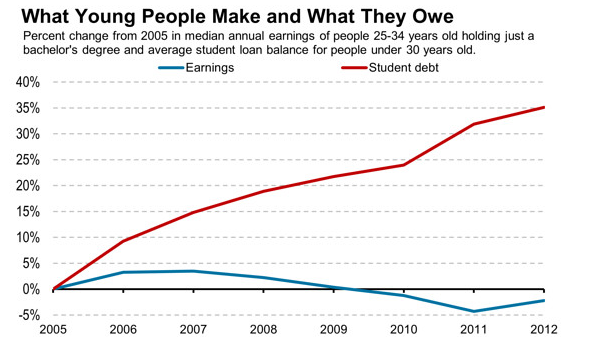"Everyone should be able to go to college and should do so no matter what it costs! Here, we'll loan you all the money you need."
Just don't mention that you'll be paying it back for the rest of your life and because of the huge debt on your shoulders, you won't be able to buy a house until you're 40 years old, if you're lucky.






What’s most striking is the hyper-acceleration of debt in the last 9 years while wages have been falling:
From 2005 to 2012, average student loan debt has jumped 35%, adjusting for inflation, while the median salary has actually dropped by 2.2%.
From housing, to borrowing, to small-businesss creation to household formation; there will be painful, long-term consequences of runaway student loan growth and it’s getting worse.
http://www.forexlive.com/blog/2014/05/16/class-of-2014-graduates- with-most-debt-ever/ 5/16/14